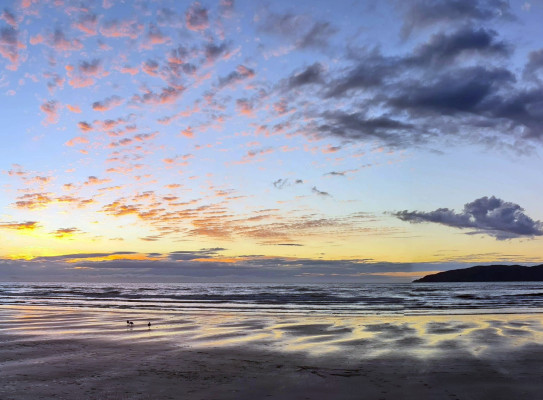
Coastal inundation in the Pacific

Sea-level rise is a significant challenge facing the Pacific region, particularly for low-lying atolls where there is limited ability to retreat from the coast. This project aims to use modelling to better understand inundation resulting from climate change and sea-level rise in the Pacific.
Overview
Climate change is the single greatest threat to the livelihoods, security and well-being of the peoples of the Pacific. As a result of climate change sea levels are rising and wave conditions are changing. This is increasing the potential risk of coastal hazards across the Pacific, particularly for low-lying atolls where there is limited ability to retreat from the coast.
GNS Science is conducting a pilot study, in partnership with Ministry of Foreign Affairs and Trade (MFAT) and the Pacific Community (SPC), to assess the probability of inundation (flooding) from sea-level rise in Pacific Island countries.
The project is using a Bayesian Network model framework, which combines multiple relevant data sources and expert and local knowledge to evaluate the risk of inundation in a specific situation and location.
This model will form the basis of an interactive tool to help Pacific countries with decision-making and planning for current and future coastal inundation. The project team will train and support key contacts in country to use the tool, so they can make better policy and planning decisions, and to inform their emergency management planning and long-term adaptation options.
The model can be adapted to the needs of specific countries across the Pacific.
This project aims to
- Produce a model that assesses the probability of inundation under a changing climate that can be used to inform present and future sea level rise-related impacts in the Pacific;
- Train and support stakeholders in the Pacific to use the model and communicate findings to a non-technical audience.
-
What is a Bayesian Network model?
A Bayesian Network is a probabilistic and graphical model that works alongside more traditional, physical process-based computer modelling to assess the likelihood of an outcome, in this case inundation and/or flooding.
The model combines data such as topography and bathymetry, land cover, tides and mean sea level, historical wave climate, outputs from numerical climate modelling, plus local and expert knowledge, to evaluate the risk of inundation in a given situation and location.
The model framework is flexible and can be modified to suit the needs of different locations and scenarios.
GNS Science has been developing this approach for risk assessment in carbon capture and storage, volcanic eruptions and now climate hazards.
See how a Bayesian Network model is being used to predict the likelihood of the Kauaeranga River near Thames flooding into the spillway: Kauaeranga River Flood Protection - GNS Science | Te Pῡ Ao(external link)
-
Glossary of key terms
Term
Explanation/definition
Bathymetry Topography but underwater, i.e. elevation and sea floor features under the ocean surface Inundation Flooding Topography Land surface elevation and/or features

Research programme details
Collaborators: Ministry of Foreign Affairs and Trade (MFAT), Government of Kiribati
Duration
Funding platform
Status
Programme leader
Liz Keller, GNS Science
Funder
Ministry of Foreign Affairs and Trade (MFAT)